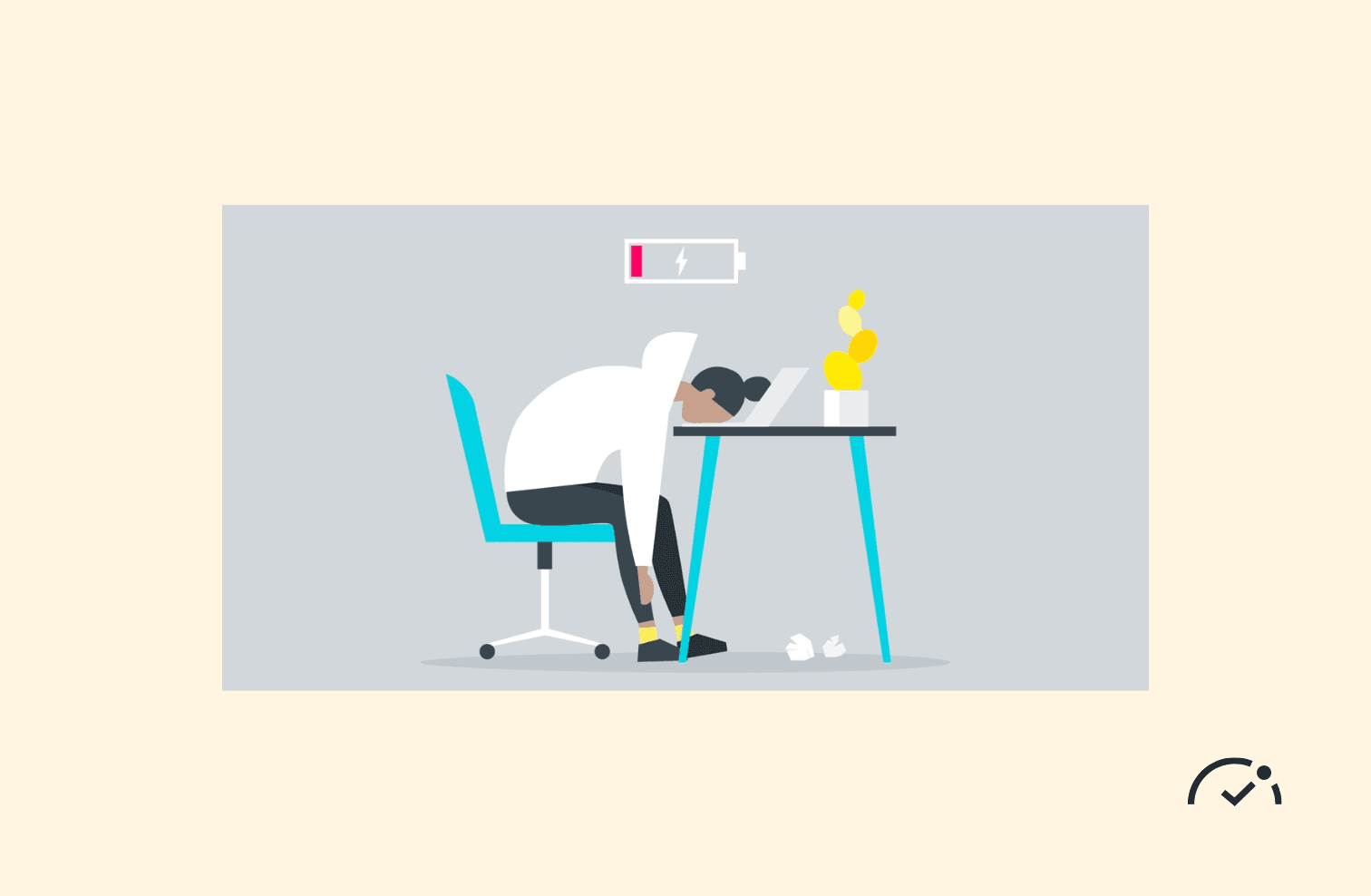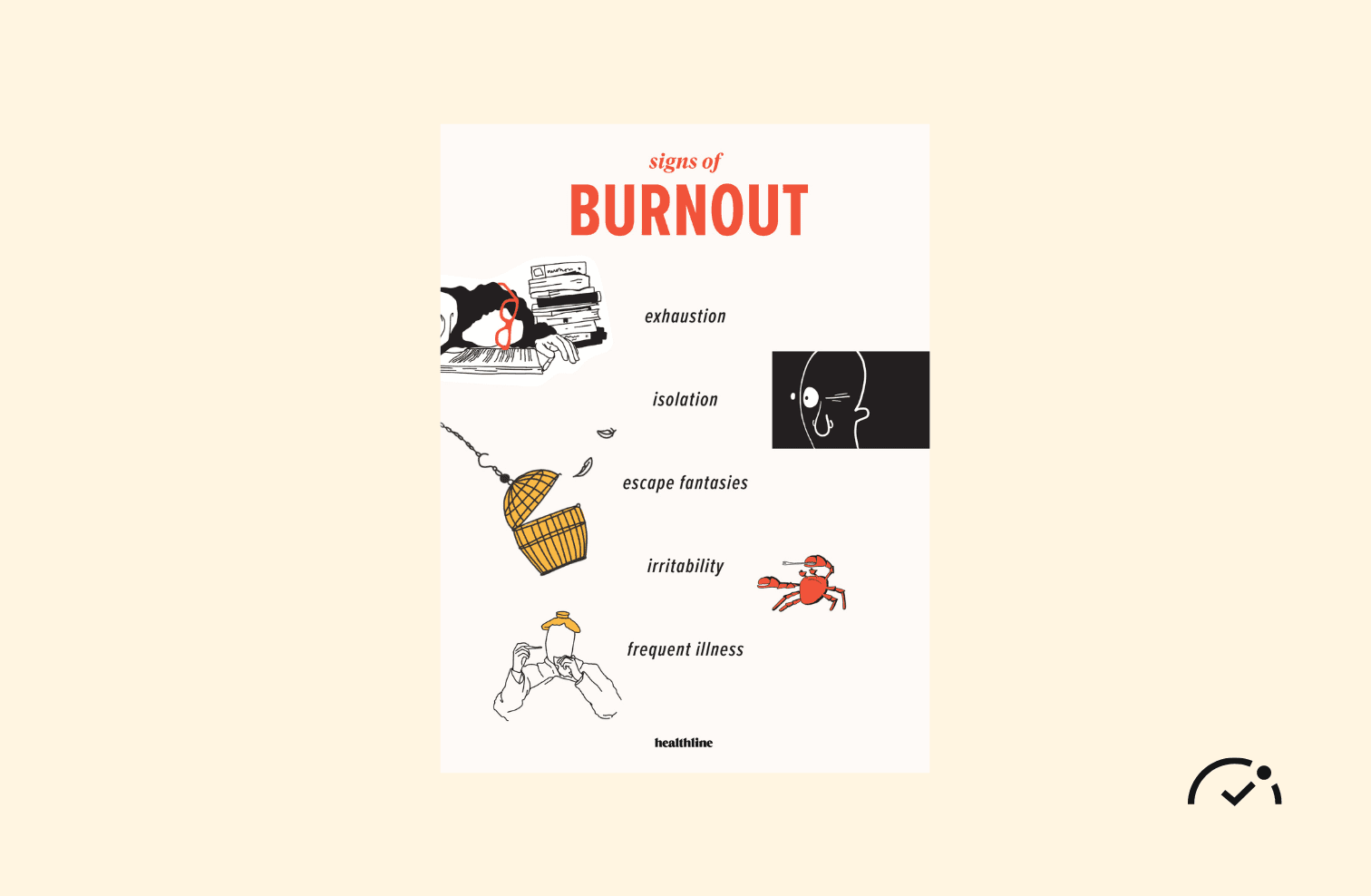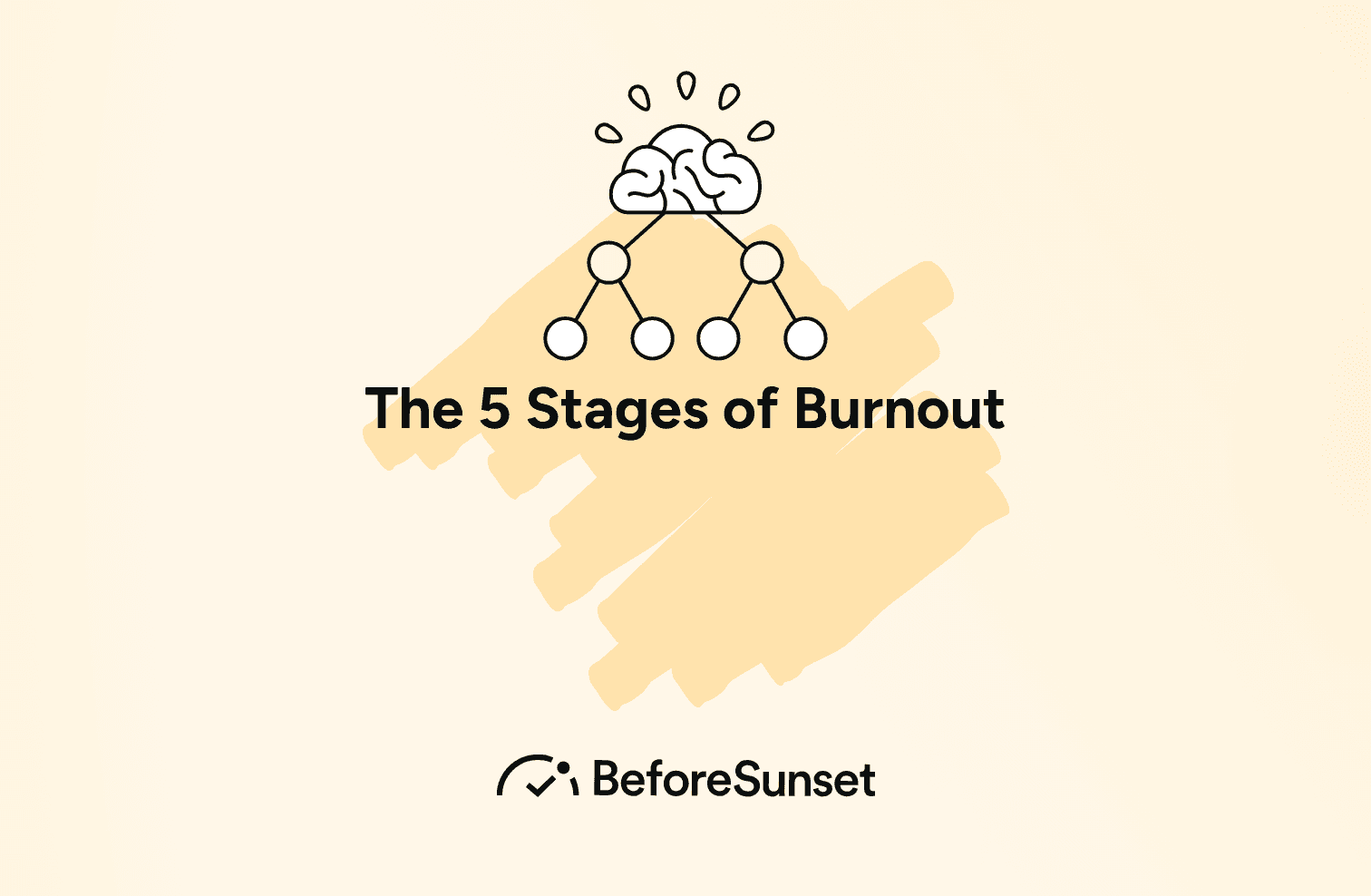Burnout has become a serious issue in the ever-changing world of modern existence, impacting people from all walks of life and with different backgrounds. The experience of burnout affects both the emotional and physical health of individuals who experience it; it is more than just a passing sense of exhaustion.
Experts have defined a series of phases that people frequently pass through as they advance from the earliest indicators of stress to the full manifestation of burnout in order to better understand this complex trajectory.
These stages help us recognize the warning signals, manage the difficulties, and eventually avoid the negative consequences burnout can cause by providing insightful information about the complex development of burnout.

2. Depersonalization or cynicism
Another telltale sign of burnout is depersonalization or cynicism, which reveals the decline in one's emotional engagement and connection to the outside world. People become emotionally detached from the activities they formerly considered fulfilling and the people they engage with, as if a protective emotional screen were put up.
Detachment or emotional disengagement are frequent signs of depersonalization. People may discover that they treat other people and circumstances with a certain degree of distance, almost as if they were watching them from a distance.
Once-meaningful or gratifying tasks might turn into ordinary tasks with little emotional commitment. This distance can even extend to loved ones, friends, or clients, straining connections and creating the impression that interactions are becoming worse.
On the other side, cynicism is characterized by a pessimistic outlook on one's job, duties, or even life in general. A person's attitude used to be defined by optimism and excitement, but these qualities start to wane and are replaced with a feeling of disappointment.
Cynicism frequently results from a feeling that one's efforts and the results they see don't match up, which adds to the sense of futility.
3. Reduced sense of accomplishment
Burnout's primary symptom, a diminished sense of achievement, portrays a picture of a person who is struggling with their own dwindling sense of value and efficacy. Achievements are obscured by this symptom, which distorts one's impression of one's own abilities and contributions.
Imagine a situation where once-cherished successes start to seem insignificant and even large successes fail to produce the anticipated delight.
The typical satisfaction and pride experienced after accomplishing chores or achieving goals is diminished. As the gap between effort put forth and perceived impact increases, the degradation of self-perceived competence can have a significant negative influence on motivation.
This symptom may appear in the workplace as an ongoing sense of inadequacy or impostor syndrome. Even when great outcomes are accomplished, people may mistrust their skills and minimize their successes.
The sensation of stagnation can cause people to lose their excitement for taking on new tasks, continuing the cycle of poor performance and escalating feelings of burnout.

4. Physical symptoms
The emotional and psychological stress of burnout manifests physically as physical symptoms, which are a clear marker of burnout. The impact of prolonged stress on physical health makes the mind-body link clear.
Imagine being always exhausted—not just fatigued as normal, but drained to the point of exhaustion that doesn't go away with sleep. Problems with falling asleep, staying asleep, or getting restorative sleep can all be exacerbated by sleep disorders. The body's recuperative mechanisms are hampered, which causes a decline in total energy.
Muscle tension and pains, combined with headaches, become common companions. Under the pressure of stress, the shoulders that were formerly straight may suddenly stoop. Since stress and the gut are intricately connected, digestive problems including stomachaches and changes in appetite might occur. People may have immune system deterioration, increasing their susceptibility to infection.
The body's physical symptoms serve as a notice that the pressures placed on it are too great. These signs and symptoms are a desperate cry for rest and self-care. Ignoring these symptoms might cause the cycle of burnout to continue and severely impair one's physical and mental health.
5. Decreased performance
Reduced performance, a sign of burnout, gives a clear picture of the toll that persistent stress has on a person's capacity for effective functioning. The ability to perform declines as the burden of burnout increases; once a reliable source of productivity, zeal, and innovation.
Imagine a scenario where once-manageable activities suddenly appear to be insurmountable. Focus and concentration deteriorate, which increases the likelihood of errors, oversights, and missed deadlines. Rather than being opportunities to succeed, the duties that formerly had significance and purpose now feel like burdens to be endured.
This loss in performance is a result of the mental and emotional tiredness that burnout causes, not a lack of aptitude or talent. Stress on the brain makes it difficult for it to function at its best. As a result, cognitive abilities including problem-solving, making decisions, and memory retention suffer noticeably.

Stress vs. Burnout
Stress and burnout are related concepts, but they represent distinct experiences along a continuum of psychological and emotional strain. While both involve feeling overwhelmed by demands and pressures, they have different causes, symptoms, and implications for well-being. Here's a breakdown of the differences between stress and burnout:
Causes:
Stress: Stress is a natural response to challenging situations, often referred to as the body's "fight or flight" response. It can be triggered by various factors, such as workload, deadlines, unexpected events, and life changes.
Burnout: Burnout typically develops over a prolonged period of time in response to chronic and excessive stressors, especially those related to work or responsibilities. It's often a result of persistent unrelieved stress and a lack of sufficient coping mechanisms.
Nature:
Stress: Stress is a temporary state characterized by heightened arousal, anxiety, and a sense of urgency. It's usually accompanied by physical symptoms like increased heart rate, shallow breathing, and muscle tension.
Burnout: Burnout is a more chronic and persistent state characterized by emotional exhaustion, depersonalization (feeling detached from one's work or responsibilities), and a reduced sense of accomplishment. It's often accompanied by physical symptoms like fatigue, headaches, and sleep disturbances.
Symptoms:
Stress: Symptoms of stress can include irritability, difficulty concentrating, restlessness, racing thoughts, and physical tension. These symptoms tend to diminish once the stressful situation is resolved or managed.
Burnout: Symptoms of burnout include emotional exhaustion, cynicism, reduced motivation, decreased performance, and a sense of detachment. These symptoms tend to persist even when external stressors are removed.
Recovery:
Stress: With proper stress management techniques, rest, and self-care, individuals can recover from stress relatively quickly once the stressors are alleviated or managed.
Burnout: Recovery from burnout often requires more comprehensive and sustained interventions. This might involve making significant changes in work-life balance, seeking professional help, and adopting long-term strategies to improve well-being.
Impact:
Stress: While excessive or chronic stress can lead to various health issues if not managed, it doesn't necessarily lead to burnout.
Burnout: Burnout, if left unaddressed, can have serious consequences for mental, emotional, and physical health. It can lead to more severe mental health conditions like depression and anxiety, and it can also significantly impair a person's quality of life and functioning.
The 5 Important Stages of Burnout
Burnout is not a passing emotion; rather, it is an ongoing, complicated process that affects both mental and physical health. Experts have defined a number of phases that people frequently pass through as they progress from the early stresses to the full-blown condition of burnout in order to better comprehend this journey.
These phases give important information on the slow onset of burnout and a guide for identifying, resolving, and eventually avoiding its negative impacts. In this investigation, we will examine the five phases of burnout and throw light on the distinct difficulties, feelings, and actions that distinguish each stage.
1. Honeymoon Phase
Enthusiasm, great drive, and a firm feeling of commitment are characteristics of the Honeymoon Phase, the first stage in the march towards burnout. It's the time of year when people start new jobs, endeavors, or obligations with a zeal that frequently obscures the difficulties that lie ahead. In this stage, people put a tremendous amount of effort into their jobs since the novelty's thrill overpowers any prospective obstacles.
Imagine beginning a new position, endeavor, or course of study. There is a clear feeling of direction, and the opportunities appear limitless. The difficulties encountered are seen as chances for development, and the work put forth is rewarded. However, underneath this upbeat surface, burnout's seeds may already be planted.
The honeymoon phase's optimism might be misleading. When someone is very enthusiastic, they may overcommit, put in long hours, and be eager to go above and beyond. The continuous pursuit of perfection may cause the lines between work and personal life to become increasingly hazy as this period goes on, frequently at the price of self-care. If self-awareness and self-preservation are not balanced, this stage of burnout might pave the way for further phases to develop.
2. Onset of Stress
The second stage of the process leading to burnout is the Onset of Stress. The duties and strains of responsibilities start to become more evident as the initial excitement of the Honeymoon Phase starts to fade. This stage marks the onset of stress, which is frequently brought on by increased workloads, demanding conditions, or short deadlines.
Imagine the point at which the initial exhilaration gives way to a mounting strain. Previously doable chores may suddenly appear overwhelming, making it difficult to maintain a healthy balance between work and personal life. In this stage, people frequently feel more anxious than usual as they begin to realize that the path ahead is more difficult than they had imagined.
There may be a propensity to respond to the onset of stress by increasing one's effort, putting in more hours at the office, and attempting to push through the challenges. Temporary increases in productivity may result from this, but if the situation is poorly managed, it may also set off a vicious cycle of ongoing stress and declining well-being.
3. Chronic stress
The third step in the process leading to burnout is chronic stress. At this stage, the once-manageable expectations and pressures have intensified into a chronic condition of stress. Chronic stress is defined by a persistent sense of overload, a constant sense of being overwhelmed, and a decreased capacity to manage these demands efficiently.
Think about bearing a burden that never seems to get lighter. The burden of obligations becomes unending, and the distinction between work and personal life becomes more hazy. The cycle of demands and pressure persists despite efforts to handle it, leaving one feeling exhausted in all facets of life.
People frequently feel physical symptoms including weariness, headaches, muscular tightness, and sleep difficulties when they are going through the chronic stress phase. They could experience emotional fatigue, agitation, and dread. Reduced productivity and performance can result from poor concentration and decision-making skills.

4. Burnout
The fourth and last stage in the evolution of chronic stress is burnout. It is a condition of complete emotional, bodily, and mental weariness that results from long-term exposure to stressful situations, unreasonable expectations, and a dearth of effective coping mechanisms.
Burnout is a chronic illness that may have a substantial negative influence on many different elements of a person's life. It extends beyond passing emotions of weariness or stress.
Imagine a once-bright fire that has now been reduced to embers. Burnout is characterized by an overwhelming sense of exhaustion, alienation, and a sense of being permanently depleted, which have destroyed the passion and enthusiasm that were formerly motivating influences.
A cynical or disconnected attitude toward jobs, obligations, and even coworkers or loved ones is a sign of burnout, as is emotional tiredness.
Chronic weariness, recurrent headaches, gastrointestinal problems, and weakened immunity are some physical signs of burnout. Mentally, people may have trouble focusing, memory issues, and a pervading sense of helplessness. Personal and professional relationships may suffer as a result, and productivity and creativity may suffer as well as general quality of life.
5. Habitual Burnout
A person may become burnt out regularly as a result of their habits, way of life, or job schedules; this is known as habitual burnout. It may be described as a pattern of chronic stress and burnout that becomes a recurring problem in that person's life.
In this situation, the person may routinely exhibit behaviors that increase stress levels, promote a lack of self-care, and create an unsustainable work-life balance. This might result in a cycle of burnout, followed by brief times of recovery before the same patterns recur.
How Do We Avoid Burnout?
Burnout recovery is a long process that calls for self-awareness, self-care, and deliberate adjustments to your routines and way of life. The following actions can help you start the process of recovering from burnout:
Recognize and Acknowledge Burnout: Recognizing and admitting that you are suffering from burnout and that it is OK to seek assistance and make changes is the first step.
Seek Professional Help: Consider contacting a mental health expert if your burnout is severe or is accompanied by noticeable mental health issues. In accordance with your needs, they can offer counseling and suggestions.
Rest and Recharge: Give yourself permission to take a break as you rest and recharge. Rest is crucial for healing. Allowing yourself to detach from work and other pressures will allow you to unwind and refresh.
Set Boundaries: Define limits between your personal life, your work, and your leisure time. Learn when to say "no" and refrain from taking on too much.
Practice Self-Care: Engage in activities that advance your physical, emotional, and mental well-being as part of self-care. Exercise, a balanced diet, methods of relaxation (such as deep breathing or meditation), spending time with loved ones, and engaging in hobbies are a few examples.
Reevaluate Priorities: Give your objectives, values, and priorities some thought. Think about if any changes need to be made to help your behaviors match what is actually important to you.
Gradual Return to Work: If your burnout is tied to your job, you might want to start with less hours or easier responsibilities when you're ready to go back to work. Increase your workload gradually as you become more at ease.
Time Management: Utilize efficient time management strategies to prioritize chores and lessen stress. Avoid multitasking by breaking things into smaller, more manageable chunks.
Delegate and Collaborate: As far as it's feasible, assign jobs to others and work together with coworkers to divide the workload.
Skill Development: Identify any areas where you might need to learn new skills or enhance your current ones in order to better manage stress and problems.
Feeling the Burn? How Burnout Can Impact Your Relationships
Burnout. It's a word thrown around a lot these days, but its impact on our lives, particularly our personal relationships, can be devastating. Burnout, characterized by mental exhaustion, chronic sadness, and a cynical detachment from work, doesn't stay confined to the professional sphere. It bleeds into every aspect of our lives, including our most cherished connections.
From Work to Relationships: The Domino Effect of Burnout
Burnout is more than just feeling overworked. It's a culmination of factors that leaves you feeling emotionally and physically drained. This mental fatigue can manifest in several emotional symptoms, including:
Irritability and frustration: You might find yourself snapping at loved ones or feeling easily overwhelmed by even minor social interactions.
Reduced interest in activities you once enjoyed: Spending quality time with friends and family can feel like a chore when you're battling burnout.
Withdrawal and isolation: The feeling of being constantly emotionally depleted can lead you to pull away from the very people who can offer support.
A Double-Edged Sword: How Relationships Can Be Both a Risk Factor and a Source of Strength
Work-related stress is a major contributor to burnout, but it's not the only one. Unsupportive or demanding personal relationships can also be a source of stress, increasing your risk for burnout. Conversely, strong, supportive relationships can act as a buffer against burnout.
Warning Signs: Recognizing Burnout's Impact on Your Relationships
Here are some signs that burnout might be affecting your relationships:
Neglecting personal time: You prioritize work or other obligations over spending time with loved ones.
Increased conflict: Mental exhaustion can lead to a lack of patience and a lower threshold for frustration, making arguments more likely.
Loss of connection: You may feel a growing sense of emotional detachment from your partner, friends, or family.
Continuous sense of failure: Burnout can erode your self-esteem and leave you feeling like you're constantly failing, both at work and in your personal life.
Physical fatigue: The emotional toll of burnout can manifest in physical symptoms like fatigue and a weakened immune system, further impacting your ability to maintain an active social life.
Protecting Your Relationships from the Flames of Burnout
Combating burnout requires a multi-pronged approach. Here are some steps you can take to protect your relationships:
Communicate openly and honestly: Talk to your loved ones about what you're going through. Explain how burnout is affecting you and your ability to connect with them.
Set boundaries: Learn to say no to additional commitments and carve out personal time for rest and relaxation.
Seek professional help: If you're struggling to cope, don't hesitate to seek help from a therapist or counselor. Health professionals can equip you with tools and strategies for managing stress and improving your overall well-being.
Revisit your priorities: Consider if your current lifestyle choices are contributing to your sense of failure. Revisit your priorities and make adjustments that allow you to invest time and energy into the aspects of life that bring you joy and fulfillment.
Remember: Your mental health is just as important as your physical health. Don't let burnout rob you of the joy and connection that strong personal relationships can bring. By prioritizing your well-being and seeking support, you can reignite the spark in your relationships and rediscover the strength and resilience you need to overcome burnout, both in your professional life and your daily life.
Final Note: Don't let burnout consume you. The feelings of negativity, feelings of hopelessness, and a crumbling sense of personal identity can feel overwhelming, but remember, you are not alone. Burnout's physical toll, manifesting in muscle pain and even physical collapse, is a powerful wake-up call. It's time to prioritize your well-being. Seek support, re-evaluate your priorities, and reclaim your life. By addressing burnout head-on, you can rebuild your resilience and rediscover the spark that fuels your passions and defines who you truly are. Remember, overcoming burnout is a journey, not a destination. Take it one step at a time, and don't be afraid to ask for help. You deserve to reclaim your energy, your purpose, and the joy of living a fulfilling life.
To Avoid Burnout Use BeforeSunset AI
To avoid burnout, BeforeSunset AI can be a game-changer. These tools offer a structured approach to managing tasks and time, allowing you to plan your workload effectively. By organizing tasks, setting priorities, and allocating dedicated time slots, you create a clear roadmap for your day, minimizing the stress of unexpected challenges.

